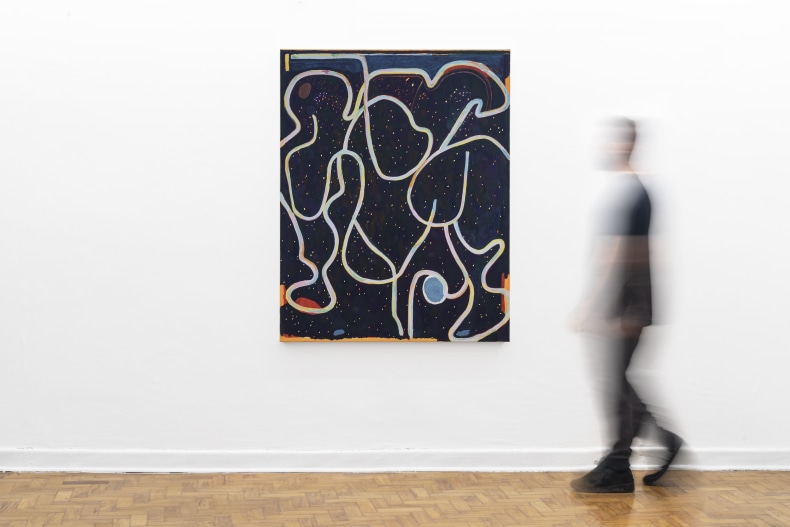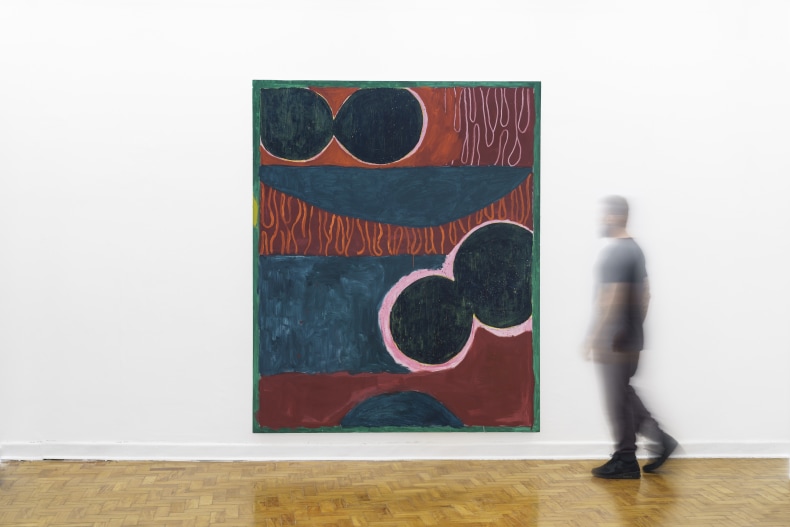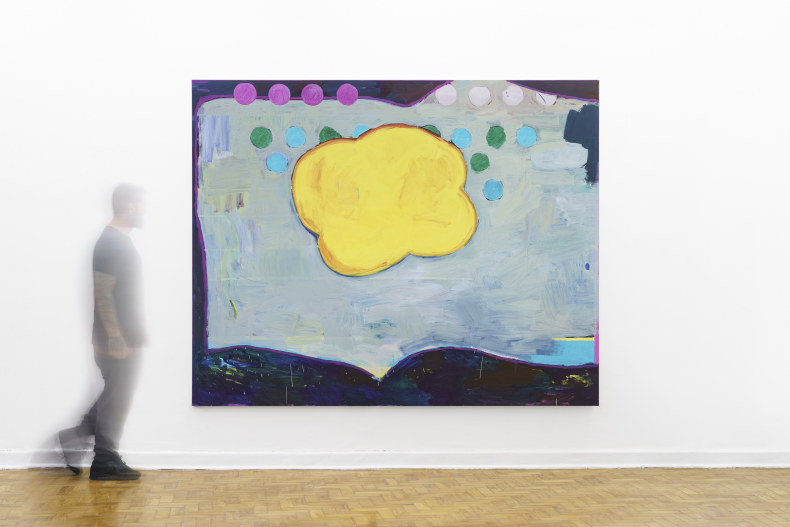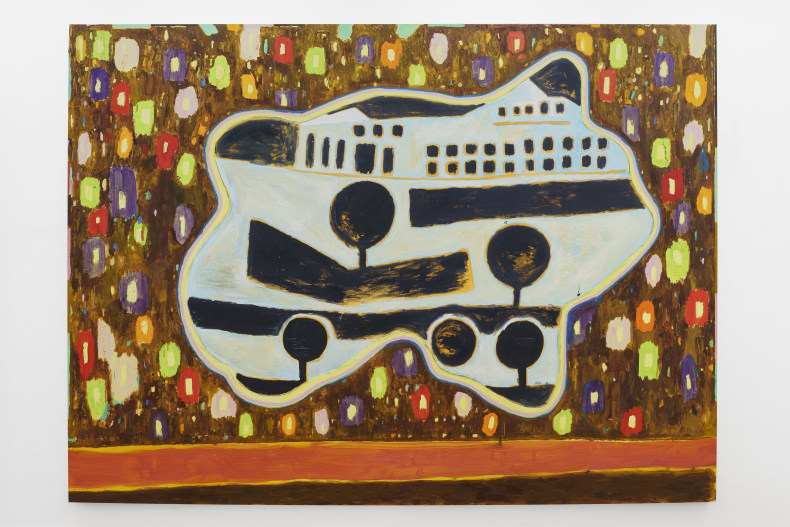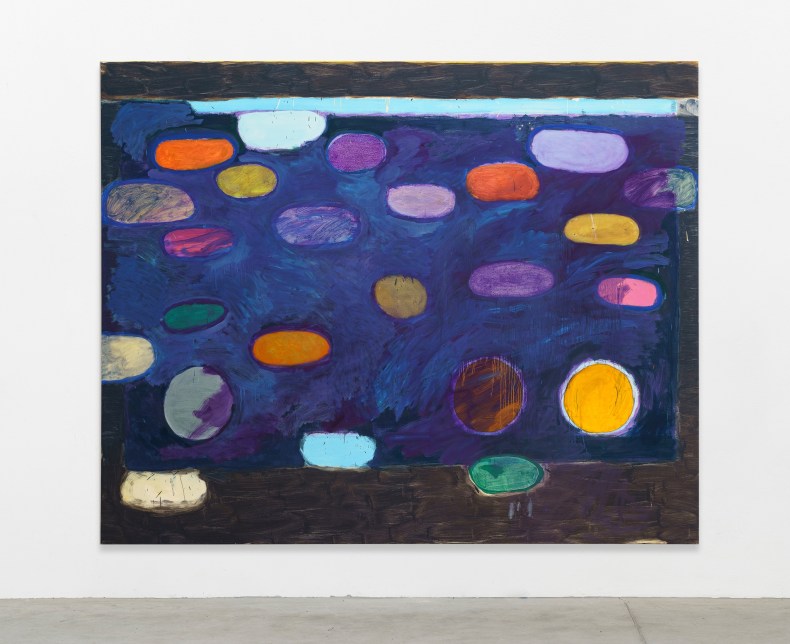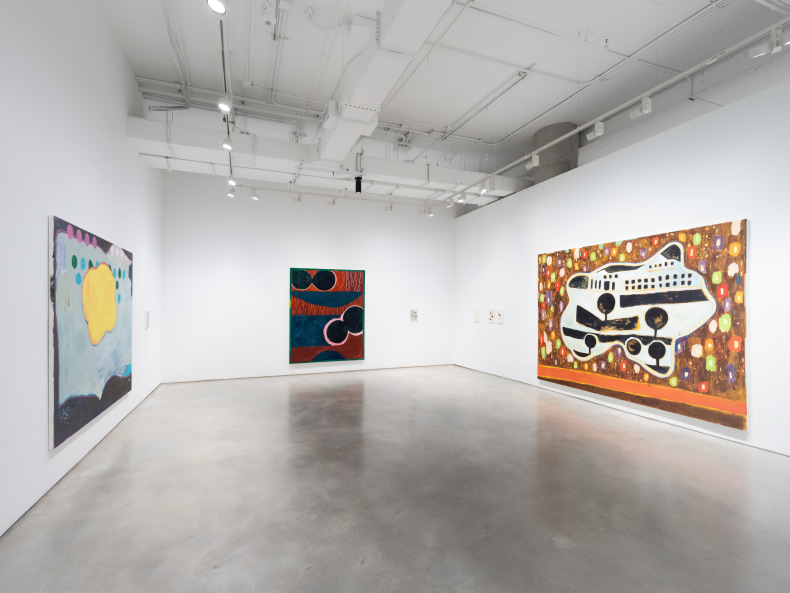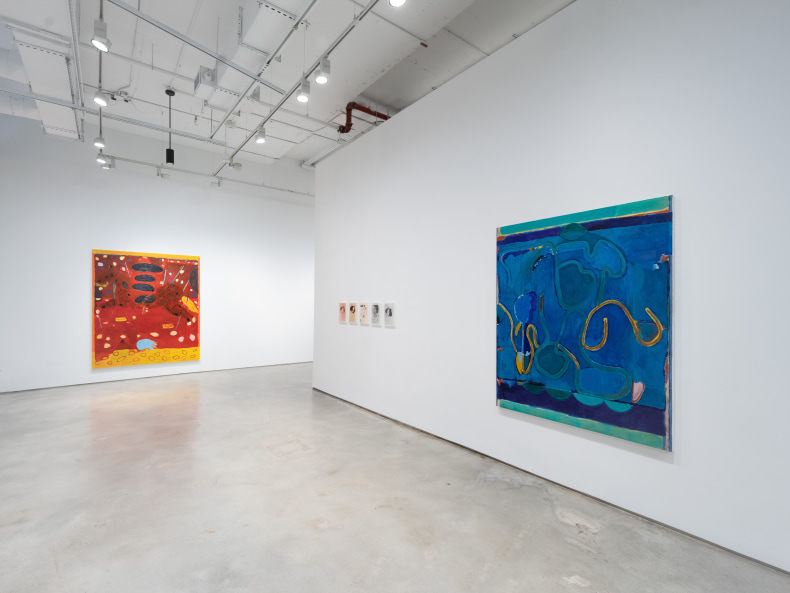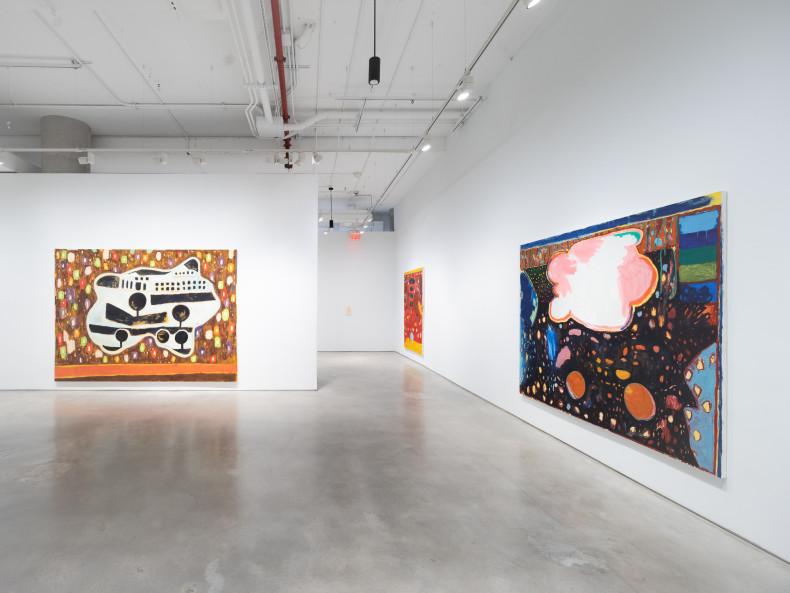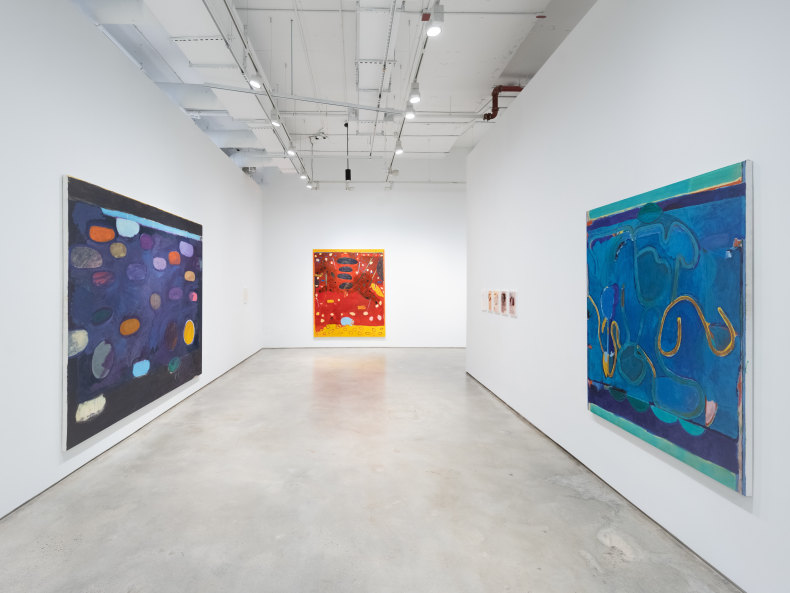Nara Roesler New York is pleased to announce Clouds, a solo exhibition by Brazilian artist Bruno Dunley. A central protagonist of Brazil’s young generation of painters, the artist hereby presents his second solo show in the city, showcasing a body of paintings and works on paper developed over the last two years.
Dunley’s current production continues to explore painting’s constitutive tensions, namely between image and structural thickness, matter and scheme, always determined by an emphatic use of color. Initiated during the pandemic, and thus produced in a more isolated environment, Clouds includes a series of paintings that appear to have internalized the artist’s surroundings at the time, suggesting bewildered and labyrinthine fields, and stressing an oneiric, subjective tone where color manifests in its excess, through undetermined spaces.
Beginning in 2020, the artist has furthered his experimentation with color, notably fueled by his undertaking of the brand Joules & Joules, which he founded alongside artist Rafael Carneiro. With stalling imports, the now-growing business began during Covid-19 as a result of scarce prime oil paint and offers Brazil’s first high-quality and accessible national product to artists throughout the country. The endeavor launched the artist into a meticulous and highly experimental relationship with pigments, which is reflected in Dunley’s recent production. Motivated by a search for luminosity in the use of oil itself, he proceeds through layers of paint, left to cover or scraped, unfolding a material narrative for his paintings.
Dunley’s works on paper are produced with chalk and charcoal, proposing a more succinct formal and chromatic repertoire. Many of the works on paper included in the exhibition engage with the idea of the cloud, with the artist repeatedly drawing its shape, not as a means of achieving compositional rigor but instead as a way of letting himself be guided by the investigative possibilities of draftmaking as a structural foundation for his paintings.
In Cloud, the shape is explored as an abstract occurrence rather than a figure. Works such as Yellow Cloud, The cloud, and The city, capture its form on the brink of the formless, featuring a presence that seems to float within uncertainty. Clouds have always been limit-figures against the backdrop of geometry and perspective, fragments of reality that challenge measurement and graphic control, and, as in Dunley’s recent work, potentially, symbolic forms for abstraction, conveying lightness and ludic oneirism.
